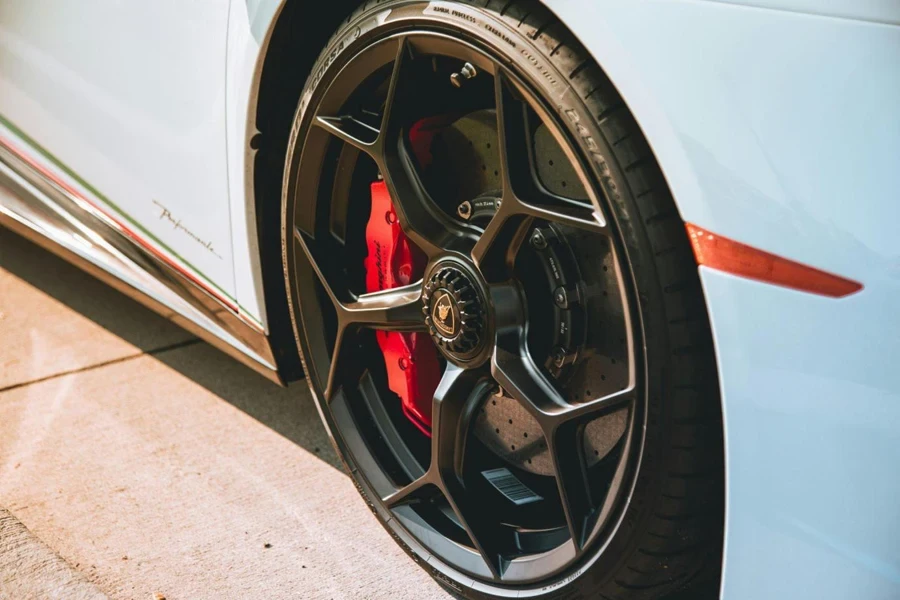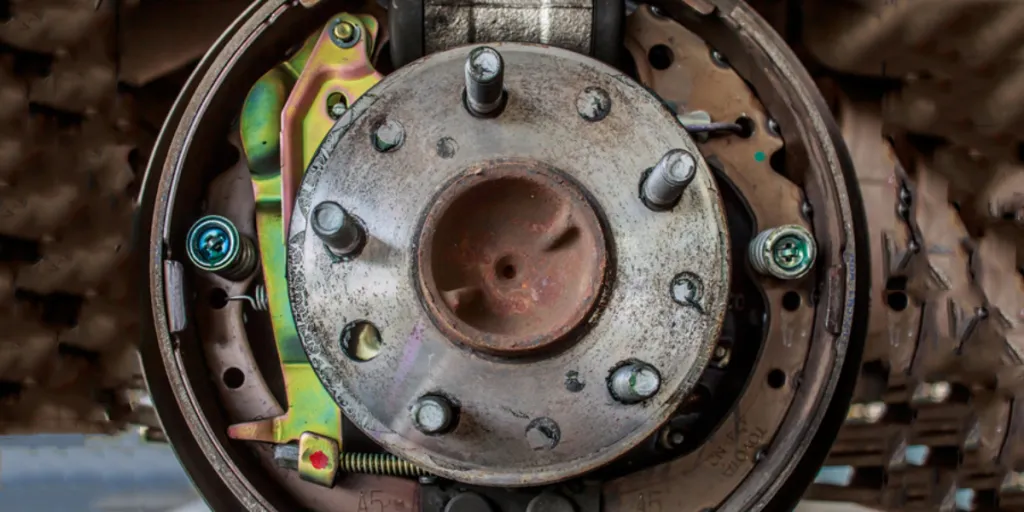Having quality brake drums in good order is a crucial part of owning or driving any vehicle. This is because they assist with timely and efficient braking, ensuring safety on the road and the longevity of the vehicle. However, brake drums need replacing when they suffer from wear or damage, making them an item that is bought time and time again.
However, selecting good brake drums can be a challenge, especially because there are many options on the market. This article discusses why brake drums are vital, when they need replacing, how they are being refined and improved with new technology, as well as what to look out for when buying them.
Table of Contents
Why buy brake drums
What are brake drums and why are they important?
What to look for when buying brake drums
When to replace brake drums
Brake drums vs. disc brakes
Conclusion
Why buy brake drums
These days disc brakes usually take precedent over brake drums in day-to-day car sales. However, within industrial, passenger, and off-roading applications, brake drums are still a firm choice. Additionally, brake drum manufacturers are embracing change and making technological advancements in the materials used, methods for noise reduction, incorporation to anti-lock braking systems (ABS), as well as working on the reduction of brake dust and other emissions.
The global automotive brake system market size is expected to grow at a compound annual growth rate (CAGR) of 5.5% from 2023 to 2030, with a market value of USD 47.75 billion in 2022. Brake drum braking systems only compose part of that market, however, and the aforementioned growth is expected to come from increased demand in passenger and commercial vehicles in India and China — both of these vehicle categories being the primary users of brake drums and both countries being global drivers of the market (China represents 25% of the market for brake drums). No wonder then, that when considered alone, the automotive brake drum market is expected to grow at a CAGR of 11.4% from 2024 to 2031.
What are brake drums and why are they important?

Brake drums are the cylindrical metal components used in drum braking systems. They are enclosed in the wheel hubs of vehicles, often the rear wheels, and are able to handle high braking forces and dirty conditions. For this reason, they are widely used with heavy vehicles and passenger vehicles. Some of the key brake drum features include:
Safety
Whether taking passengers from A to B or speeding around corners on Formula 1 tracks, braking is critical for safety. Brake drums are an essential component of the widely-used drum brake braking system, and as such, have safety at their core. Brake drums are robust and able to withstand high temperatures and friction from the brake shoe during braking, meaning safe slowing and stopping.
Performance
Brake drums can cope with high weights, temperatures, and levels of strain, however, the quality and condition of the vehicle’s brake drum will directly affect its performance. Damaged or worn brake drums can mean an uneven or thin surface, which would reduce braking efficiency and can even lead to brake failure.
Durability
Usually made from cast iron, brake drums are incredibly robust and able to withstand significant wear and tear. They are continuously subjected to friction and fluctuating temperatures but are able to resist warping and cracking for long-lasting performance. In addition, as they are enclosed, they are protected from dirt, gravel, and other materials that could damage them.
Noise reduction
Well-maintained brake drums will allow for smooth driving and quiet braking, meaning a more comfortable driving experience. If braking becomes uneven or there is increased braking noise and vibration, this could be an indication that the brake drums need replacing.
What to look for when buying brake drums

Material
Most brake drums are made from cast iron, which has excellent heat dissipation qualities and good durability. However, specialist driving has meant new options in the materials used for brake drums.
High-carbon alloys and composite materials now make up some of the brake drums on the market. These high-performance brake drums offer reduced weight for increased speed and better handling. In addition, they offer better resistance and strength, and improved heat dissipation qualities, all while not compromising on the longevity of the component. These high-performance brake drums are the ideal choice for vehicles with higher requirements, such as those that consistently drive in difficult terrain or pull heavy loads.
Size
The size and fit of the brake drum will vary depending on the vehicle model and its braking system. Choosing the right size is of paramount importance, as fitting the wrong size can damage the braking system, leading to increased stopping distance and even brake failure.
To buy the correct brake drum size, a mechanic will measure the diameter and width, as well as check the bolt pattern, before matching this to the vehicle’s braking system. This information can also be found in the vehicle owner manual.
Weight
The weight of a brake drum depends on the materials used in its construction. Which type of brake drum material a vehicle uses will be influenced by its driving requirements. For example, heavier cast iron brake drums have effective heat dissipation qualities, great durability, and are usually the lower cost option. Composite material or high-carbon alloy brake drums are lighter, thereby improving vehicle handling, and offering better heat dissipation qualities. However, these are often more expensive than the former type.
Temperature regulation
Successive and prolonged braking can lead to the continuous overheating of the brake drums, which will damage it and cause warping, cracking, and brake fade. These effects can reduce the generation of friction in the brake drums, slowing the vehicle during driving and negatively impacting braking efficiency, as well as leading to the premature replacement of the brake drums.
If a vehicle is destined to work under great stress, such as a passenger coach that travels up and down valleys or a 4×4 that is driven over difficult terrain, then it could be wise to invest in high-end brake drums. These cost more but come in ventilated designs and include features such as cooling fins.
Corrosion resistance
Corrosion occurs when vehicles are driven in harsh weather conditions (including high humidity, frequent rain, and snowy winters) or on roads that have been covered in road salt. This is a normal reaction to the surroundings, but one that can damage brake drum efficiency. To mitigate the impact of salt and weather and reduce corrosion, choose brake drums that have been treated with anti-corrosion coatings or that have been fabricated with corrosion-resistant materials.
When to replace brake drums

There are various ways to tell when a vehicle’s brake drums need replacing. The three following symptoms are the first that need to be watched out for:
Reduced braking performance
This is a clear sign that the braking system needs to be checked and that the brake drum may need replacing. Drivers should look out for an increase in stopping or slowing distance, as well as checking to see if the brake pedal needs to be pushed down harder than usual.
Reduced stability
If the driver notices unusual noises at the time of braking, such as squeaking, grinding, or scraping, then this could mean that the brake drum needs replacing. The reason for this noise is usually that the brake shoe may have difficulty pressing against the drum, which could indicate that it is worn or warped. Another symptom of a worn or warped brake drum is if the driver can feel vibrations or pulses in the steering wheel and/or pedal when braking.
Damage
If there is any sign of damage on the brake drum, such as visible cracks, grooves, or deep scoring on the drum surface, then this could be a strong sign to replace it. This kind of damage can impact the structural integrity of the brake drum and lead to dangerous brake failures.
Brake drums vs. disc brakes

The key difference between the two braking systems — brake drums and disc brakes — is that the brake drum is incorporated into the wheel while the disc brake is an external, disc-shaped rotor attached to the wheel. In terms of functionality, the brake drum counts with a brake shoe that pushes against the wall of the drum to create friction and stop the vehicle. The disc brake, meanwhile, counts with brake pads either side that clamp onto the disc, creating friction to slow the vehicle until it reaches a stop.
Performance
Although adequate for most road users, brake drums do not offer the consistency and strength in braking that disc brakes do. In addition, their heat dissipation qualities are no match for disc brakes. However, unless driving at particularly high speeds or under challenging conditions, brake drums can handle most driving situations.
Suitability
Brake drums are cheaper than disk brakes while still offering good braking power and durability. In addition, the enclosed nature of the brake drum means that the braking system is better protected from dust and dirt than the external disc brake. This makes brake drums more suitable to heavy vehicles that drive in off-road or industrial conditions, such as trucks, buses, and trailers.
Cost
The components in a brake drum braking system are usually lower cost than their counterparts in the disc brake braking system. This is why they are often used in the rear wheel of more budget-friendly vehicles. However, brake drums are harder to access than disc brakes, and they require more maintenance. This means that despite the initial lower cost, brake drums can be more expensive than disc brakes in the long run.
Conclusion
Brake drums may not grace the high-performing and high-cost vehicles many wish to own, but they are a core component in the transportation industry and one that will continue to see sales grow. These items are the preferred choice in industries requiring larger vehicles, including the growing sectors of coach travel, mining, construction, and manufacturing. Additionally, as items that require maintenance and replacement, brake drums are in growing demand.




